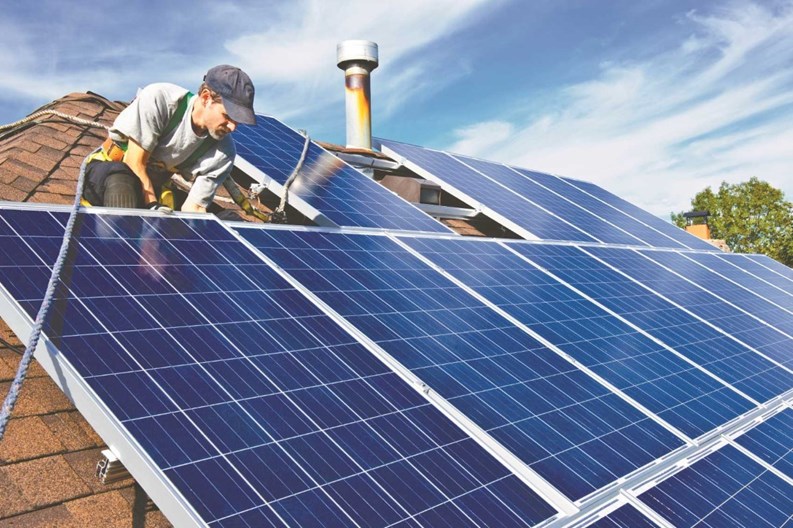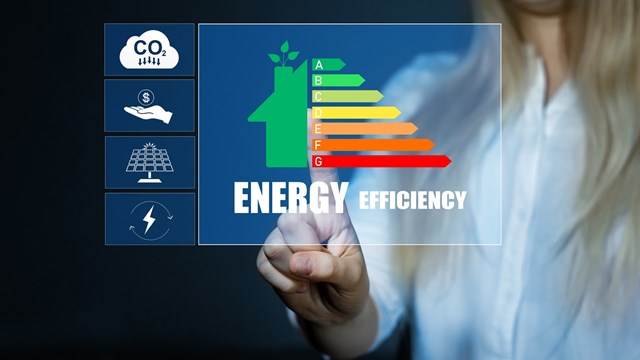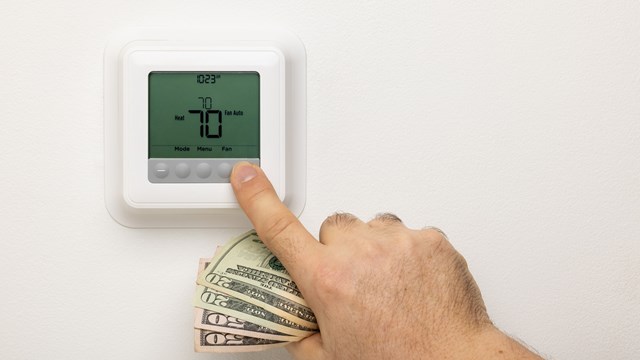In an era of tight budgets and growing green consciousness, more co-op and condo communities than ever before are moving toward energy conservation and sustainable resources. For residential buildings in New Jersey, an extraordinary number of resources exist for them to make drastic changes to the way they consume energy, including education, training, networking and even financial assistance available through a broad network of green organizations and programs.
According to The Wall Street Journal’s Metropolis blog, a recent survey examining the sustainability practices and policies of American and Canadian cities revealed that neighboring New York City ranked third behind Vancouver and San Francisco, which took top honors. The study cited New York’s “environmentally sound transportation system and land-use regime” as tops among all 27 cities surveyed.
Although the Garden State did not snag a spot on the list, by taking advantage of the vast amount of resources the state has to offer, co-op, condos and HOAs can join the movement and begin conserving energy, saving money, and allow New Jersey to soon emerge as a green leader.
Finding the Right Partner
Perhaps the most comprehensive resource available to boards and individuals interested in learning more about how they can save money and conserve resources in their homes is the New Jersey Clean Energy Program (NJCEP), which offers services, programs, and financial incentives for residential, municipal, and commercial customers. According to the website, the NJCEP “is recognized as a national model for programs that spur market development and the adoption of clean, renewable energy technologies, managing programs to encourage energy efficiency, and assistance for low-income customers.”
Established in 2001 and managed by the New Jersey Board of Public Utilities, the program has been able to generate impressive results. According to their website, NJCEP has saved 26.6 million MWh of electricity and generated 11.5 million MWh of renewable energy between 2001 and 2009. It also reduced customer's electricity and natural gas bills by $116 million for the entire state.
In addition to saving energy and sparing wallets, the various alternative energy programs have shown a substantial benefit to the environment and public health. The NJCEP website sites that the total reductions in CO2 emissions from the programs were equivalent to taking 95,000 cars off the road.
As evident by the statistics, the program provides great benefits for the all parties involved. “ From the New Jersey Board of Public Utilities' perspective, energy efficiency reduces pressure on the grid, thereby improving reliability and costs. From the ratepayers' perspective, economic and environmental concerns are the primary reasons for participating in energy saving programs,” says Greg Reinert, director of communications for the NJ BPU.
One of the program's features are the rebates offered by the state for customers who take measures to install more energy-saving equipment or appliances, which Reinert says is the most popular energy efficiency program for the residential market. The rebate application can be filled out online and usually takes only a couple weeks to process. For example, customers can receive a $50 rebate for installing an Energy Star clothes washer or $300 for switching to an Energy Star boiler. Energy Star products are those that meet or exceed energy efficient guidelines set by the Environmental Protection Agency. Consumers can spot these items because of their particular label.
Providing incentives encourages adaptation of cleaner energy supply. “Programs such as the rebate program are referred to as market transformation programs which are designed to change the behavior of market participants,” says Reinert. “ We are trying to encourage how energy consumers to change how they consume energy by changing the market through the offer of incentives for more efficient and cleaner technologies.”
Another program offered by the state is called Pay for Performance, in which commercial customers work with program partners to develop, implement, and monitor an energy reduction plan. According to the website, buildings that are eligible for the program include “any commercial, industrial, and institutional building with a peak demand over 100 kWh for any of the preceding twelve months.” Many high-rise condominiums fall into this category. Besides existing structures, Pay for Performance also provides incentives for buildings undergoing large renovations and new construction. With the help of professionals, buildings can be designed to operate at 15 percent lower energy costs.
In addition to working with experts in their respective fields, participants receive incentives along the way to assist in project completion. “The first step is to complete an energy audit, which is something my firm does. If you can show that you can reduce your energy consumption by 15 percent, there is an incentive that covers part of the cost of the audit,” explained Mitch Frumkin, PE, RS, CGP, a partner of the Pay for Performance program and president of Kipcon, an engineering and consulting firm in New Brunswick. “The second incentive is paid at the installation of the recommended measures and the third incentive is paid after a year, when the actual savings are evaluated. If you projected that you would be saving 20 percent, for example, and you are actually saving 25, the last incentive can actually be higher.”
Knowledge saves money, energy
Even with all the program and incentives offered to citizens, many are still reluctant to switch over to cleaner energy. “One major misconception is the cost of implementing energy savings or green energy programs. Often consumers assume the costs associated with these are much higher than they actually are,” says Paul Frantz, chief marketing officer of EnergyPlus, an independent energy supplier. He explains that there are a number of alternative energy suppliers that offer renewable energy options where the cost is just a penny more per kilowatt hour to enroll. “In addition, a few companies are offering incentive programs to customers who partake in these programs such as cash-back or air miles,” he says.
Frumkin, a professional engineer and certified green professional, also notes that while initial costs to install energy-efficient equipment may be higher, operational costs will surely decline. He describes an instance in which a high-rise condominium in northern Jersey was replacing a piece of HVAC equipment and was torn between two options: the first bid called for a $25,000 standard unit, while an energy-saving one was $50,000. “The board's eyes lit up when they heard about the $25,000 option but the manager took a closer look and discovered that the more expensive unit would actually save the building $50,000 per year in energy costs.”
Boards and individual unit owners may also be surprised at the vast number of incentives that are offered. “I tell every one of our clients, if you're replacing a piece of equipment that uses energy, find out what kind of incentives are available, because there are incentives for just about anything,” says Frumkin.
While alternative energy is slowly infiltrating itself into the energy market, many consumers have already made the switch to cleaner technologies. “Homeowners are beginning to understand that 'going green' is more than just a fad and they are embracing the green movement in many ways, including supporting green energy,” says Frantz.
In the state of New Jersey in particular, there has been a great interest in adapting solar energy. According to the NJCEP, there have been more than 10,000 solar projects installed between 2001 to 2011, providing the state with over 380,000 kW of power. Wind, biomass, and fuel cell projects were also implemented, totaling more than $380 million in rebates for customers. New Jersey had one of the strongest growth markets for solar energy installations in 2010 and in the first quarter of 2011. For the first quarter of 2011, New Jersey installed 42 MW of solar, representing 49 percent growth over first quarter 2010.
With the increasing number of participants in energy-efficiency programs, Frantz believes that the energy market will change to meet demand and expectations. “The evolution of green energy options leads me to believe that they will become a standard consumer expectation, like good quality and first-rate customer service are now,” he says.
Taken together, the measures undertaken by NJECP, Pay for Performance, and a myriad of other municipal and non-municipal agencies throughout the city are gradually transforming the way citizens of New Jersey live. For co-op and condo buildings, there likely has never been a better time to get involved and take advantage of the incentives designed specifically to help them make the transition to the new, green age. Although the initial investment in infrastructure, equipment and materials may seem steep, with the proper balance of incentives and long-term savings, the effort will ultimately save money and save the environment.
Liz Lent is a freelance writer and a frequent contributor to The New Jersey Cooperator. Editorial Assistant Maggie Puniewska contributed to this article.







Leave a Comment